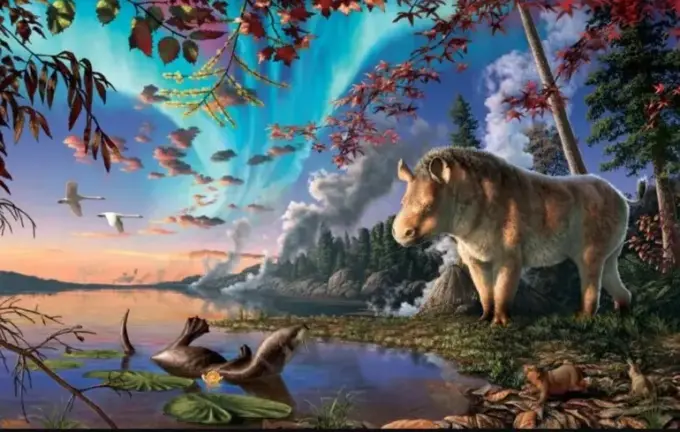Arctic rhinoceros from 23 million years ago rewrites history of Earth’s fauna

Scientists from Canada have made a remarkable discovery that could revolutionize our understanding of fossil animal evolution.
Over 40 years ago, well-preserved remains of a unique beardless rhinoceros living in the Arctic were found amid ice sheets.
This find has become a global breakthrough, challenging previous beliefs that such animals appeared much later and inhabited different parts of the world.The fossils belong to a new species — Epiatheracerium itjilik, which in Inuktitut means “frost” or “frosty.” They indicate that this rhinoceros resembled modern Indian rhinos (Rhinoceros unicornis) but was less well-known.
It is the only specimen of this kind found so far, providing valuable insights into its characteristics and ecology.
The nearly complete skeleton, mineralized but still three-dimensionally preserved, allows researchers to analyze over 75% of its remains — an extraordinary level of completeness for a fossil.Excavations took place inside a 23-kilometer-wide crater formed by a comet or asteroid impact approximately at the same time when this rhinoceros lived.
Rapid flooding of the crater preserved the remains remarkably well, offering clues about the climate of that era.
Evidence suggests that the region was much warmer than today and supported temperate forests with trees and shrubs similar to present-day forests in the temperate zone, particularly around Devon Island in Nunavut, Canada.The fossils were first discovered in 1986, and subsequent excavations uncovered additional bones belonging to the Arctic rhinoceros.
Researchers also found remains of a swimming seal, Puijila darwini, living nearby.
Analysis of these remains indicates that Epiatheracerium itjilik was a close ancestor of the rhinoceroses that inhabited Europe more than 23 million years ago.Modern rhinoceroses appeared about 40 million years ago in North America and Southeast Asia, spreading across all continents except South America and Antarctica.
However, this recent discovery — the northernmost rhinoceros remains ever found — suggests that these animals migrated north via the so-called North Atlantic land bridge, an ancient passage through Greenland.
This land bridge emerged late in the Cretaceous period but its disappearance remains debated, with some sources suggesting it vanished around 56 million years ago, while others contend it persisted until about 2.7 million years ago.New evidence supports the latter hypothesis, as rhinoceroses appeared in North America 23 million years ago, implying that the land bridge persisted at that time.
This discovery underlines the importance of the land connection for faunal migrations and offers new insights into Earth’s paleoclimate and geological history.

